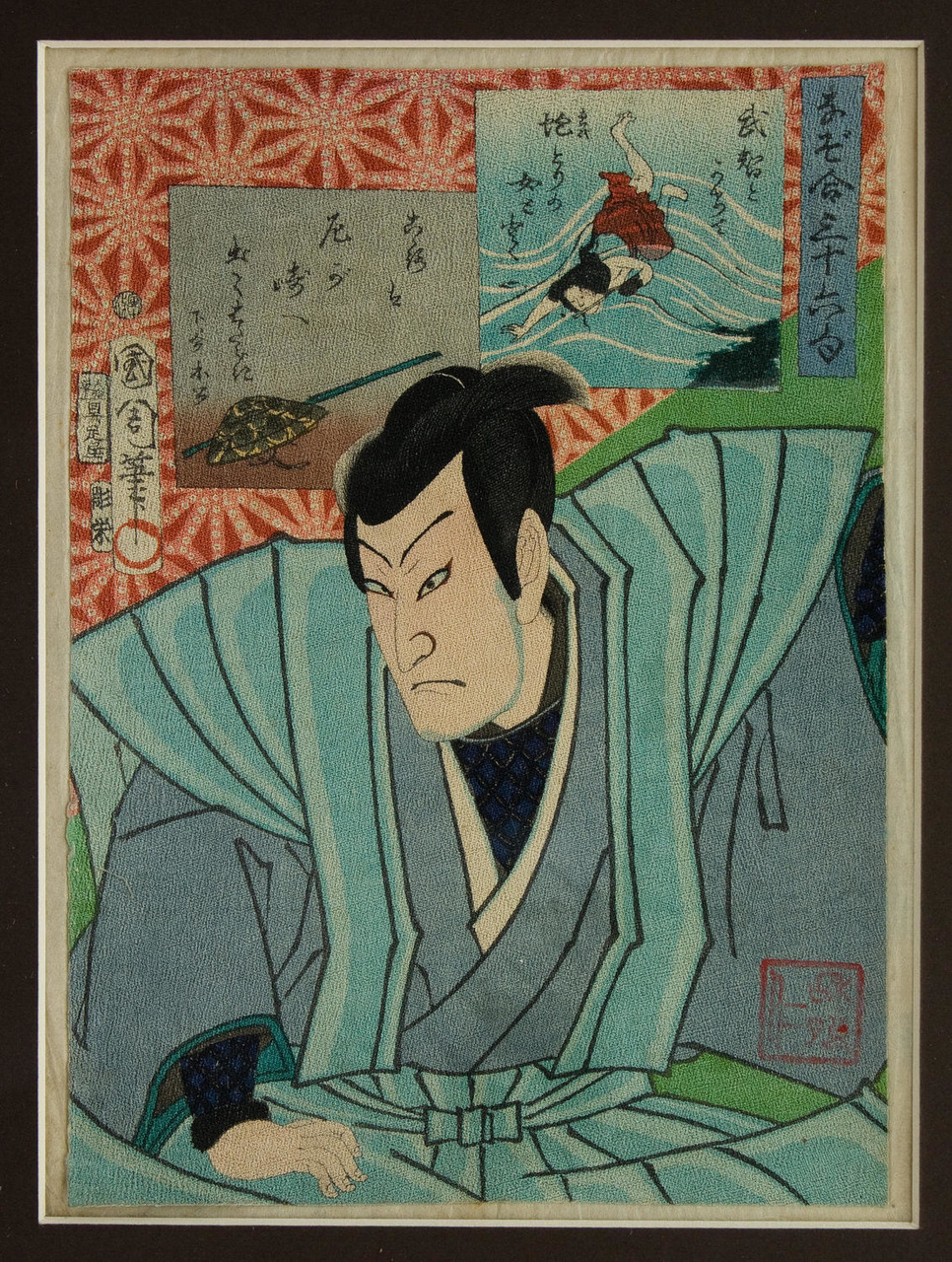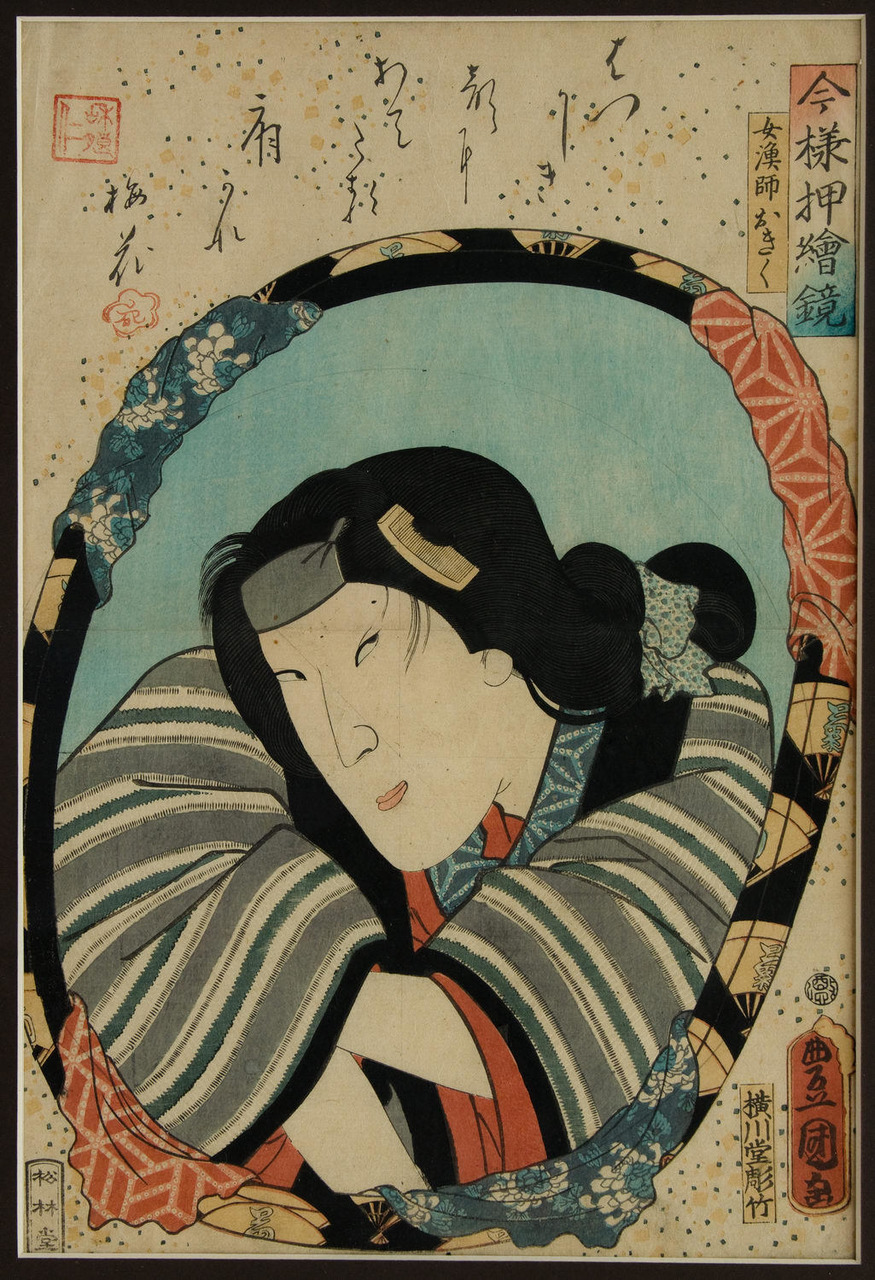
Бесплатный фрагмент - About Ukiyo-e Master Toyohara Kunichika
Intro
Occasionally came up to know about Toyohara Kunichika when succeeded to conclude a Contract with Samara Art Gallery in January 2022. After passing exam to translate 5 art pieces of Meiji era the Gallery entrusted me to translate 40 pieces paintings, pottery, sculptures collected by Alfred von Wakano — an Austrian entrepreneur who established Samara brewery back in 1881. After 5 months of working with the collection birds view on the completed job braught me to the tought Kunichika“s ukiyo-e from the series «36 puzzles» was the biggest treasure among the art pieces triggering my further interest in this series.
Saying a few words about the Master, he was born on June 30, 1835 in Edo (current Tokyo) as the second son of a Sento (Japanese-stype sauna) owner. His real name at borning was Arakawa, and the name «Kunichika» he composed from the two characters borrowed from the names of his teachers — first teacher Toyohara Chikunobu and biggest teacher Utagawa Toyokuni III (Kunisada).
Like many other painters Kunichika used to change places of living frequently to find a fresh background for new paintings, but unlike most of the painters he used to get married almost with every shift — it is regarded that Kunichika married over 40 times.
Despite having so many wives the Master never kept his earnings for long — normally he spent them all as soon as he received them — drinking sake with friends. When he did not have money but saw a person in need — he used to give out his personal belongings, and not limiting to his personal belongings. There was a saying that if you go to visit Kunichika“s house — better not take with you expensive things as the Master normally does not return it but uses for charity.
High level of painting skill combined with the Master“s excentric nature resulted in reviving of public interest towards Kabuki theater once weakened during Meji reforms (1867 — 1877).
Series «36 puzzles»
So far only 6 paintings of the series were known, 7th one was among Samara collection by Alfred Wakano. 29 are still to be discovered, hopefully.

The painting depicts a Kabuki actor playing a role of Takechi (theater prototype of Akechi Mitsuhide who betrayed the first unifier of Japan Oda Nobunaga back in 1582). There are two frames behind the actor: the right frame text says: «It regards Takechi (Takechi ni kakete), writes with a character meaning lady-divers „ama“ (Ama to kaku)». Left frame text says: «All his thoughts are about Amagasaki (Kokoro wa Amagasaki he)».
Actually «Ama» character is a part of the city name «Amagasaki» where Akechi was born and grew up. When Akechi visited his home town after betraying Nobunaga he felt someone was hiding behind the decorative screen. He thought it might be a spy sent to kill him in revenge for Nobunaga, took out a spear and stabbed through the screen. The screen fell down and Akechi saw his mother dying. She uttered only one word — «Aho» (idiot — author’s remark) which might be a verbal punishment for the betrayal he had committed.
Possible origin of the historical puzzle genre
Actually Kunichika’s teacher Kunisada has one painting which keeps triggering experts’ quarelling on it’s contents.

The sign on the portrait reads: «Fishing lady O-kiku (Onna gyoshi O-kiku)». However, the history knows only one O-kiku who was a servant of Yodo, widow of 2nd unifier of Japan Toyotomi Hideyoshi. O-kiku is famous for her betraying Yodo in 1615 when Osaka castle was surrounded by the troops of Tokugawa Ieyasu — third and the last unifier of Japan. When Tokugawa troops started attack on the castle O-kiku took all her savings and sneaked away. Captured by Tokugawa soldiers she gave out her money to them and was released. She safely reached Kyoshu Island where younger sister of Yodo served at a monastery and told a fake story of being devoted to her lady-boss until the last moment of her life. Yodo’s sister trusted the story and O-kiku could live the rest of her life calmly.
The gesture on the painting — a hand inside the sleeve — in Japanese means «sode no sita» which translates in English as «under table». There was no table when O-kiku bribed Tokugawa soldiers but the fact remains the fact.
Another sign of sarcastic nature of this painting is a signature of the author with peculiar character «tree» with the bended head line and a circle atop — this sign exists on all banter paintings by Kunisada.
There could be another mockery in this painting: as O-kiku found a shelter in isolation at a monastery — in a decade Japan closed up from the rest of the world for the «sakoku» period for couple hundred years.
P.S.
Toyohara Kunichika lived a happy life of 65 years and one day passing away on July 1, 1900. The sign on his grave stone reads his last Senryu: “If you are fed up with painting faces of the people, it is high time for you to visit Devil’s apartment”. Most probably Kunichika kept painting faces until his last sigh. He loved people, loved puzzles, and some of his puzzles are still to be discovered.
New discoveries in 2023
5 more works by Kunichika from “36 puzzles” series have become publicly available. Managed to translate some of them:
Adventurer Sukeroku
A Kabuki actor plays the role of Yakuza-gangster Hanakawado Sukeroku. There is no single model for the charcter but 2 – 3 existing assumptions suggest it might be a rice merchant who wanted to acquire ancient sword Tomokirimaru by gangster methods.
Sign in the right square behind the actor:
“Relates to Sukeroku, the answer contains clothes especially made for him” (The plot of this performance Sukeroku“s mother made for him clothes from rice paper WASHI so that he less engages in any sort of quarrels and fisticuffs knowing such clothes easily tears off)
Sign inside left square behind the actor:
“His soul is happy with the rain of pipes” (Sukeroku did not engage into a fisticuff with his opponent Ikyu but punched him indirectly in a tavern when all geisha passed over their pipes to Sukeroku and none of them to Ikyu*. *A client of a tavern could pick up a geisha only from those who had passed him a pipe).
What is Kunichika’s message through this painting — a simpathy to a hooligan or accusation of his gangster methods? A bit of simpathy would exist probably as Kunichika himself was quite an adventurer.
Бесплатный фрагмент закончился.
Купите книгу, чтобы продолжить чтение.